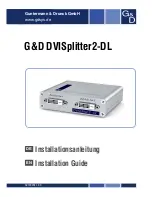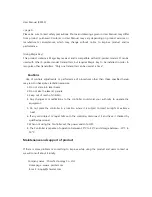
I. CAMERA FEATURES AND OPERATION
10
Shutter Release
Techniques:
Half-Press vs. Mash
focus manually until you are “in the ballpark,” then try using AF for fine-tuning.
Additionally, this is an instance where the distance range selector switch on “white”
lenses like the EF 70-200mm f/2.8L USM can reduce the length of time the AF system
spends hunting for focus, if your subject distance happens to be beyond the range
stated on the lens switchboard.
In
One-Shot AF
, it can take as long as a full second or more for the camera to achieve
focus completion in extremely low light without a focusing aid. Even with a Speedlite
featuring an AF-Assist beam, low-light AF will be slower than bright-light AF. This is not a
design flaw or manufacturing defect; it’s related to the sensitivity of the AF sensor.
Remember that the AF system is always passive, even when using an AF-Assist beam;
AF search in low light can be faster with an AF Assist beam than without one, but bright
light AF speed will always be faster with a readable subject.
In
AI Servo AF
, the camera samples the AF detection data at varying rates of frequency
depending on the light level. The brighter it gets, the higher the sampling rate and
therefore AF performance improves. But as light levels drop off, the sampling rate
decreases and a point is reached where the tracking ability of the AF system is
diminished. In other words, it’s unrealistic to expect AI Servo AF to track fast-moving
subjects as well in low light as it does in bright light.
Again, you may not always have control over lighting conditions, but it is important to
understand that there are limitations to AF performance according to the level of
available light.
Another factor that has a lot to do with AF performance is shutter release technique. In
order to achieve the greatest possible performance from your EOS camera, it is essential
to press the shutter button halfway and hold it there until the instant you are ready to
shoot, especially in AI Servo AF with moving subjects. No other way is nearly as effective
in terms of maximizing AF performance.
There are two issues at stake here: the first is focus tracking and the second is a
phenomenon known as “release-time lag” or “shutter lag.” In One-Shot AF, pressing the
shutter button halfway locks the focus. When the camera is set for AI Servo AF and the
shutter button is pressed halfway, the AF system begins tracking the subject. If you
simply press the shutter button down without waiting for the AF to function, the shutter
release might lock up or be delayed in One-Shot AF. Under the same conditions, the
shutter will release without focusing in AI Servo AF. This is true with or without the use
of an AF-Assist beam. Conversely, pressing the shutter button halfway and holding it
there until you are ready to shoot allows the focusing system to lock focus in One-Shot
AF or start tracking the subject in AI Servo AF. Pressing the shutter button down all the
way once focusing has been established will release the shutter in the shortest possible
time, thereby increasing the odds of capturing “the decisive moment.”










































